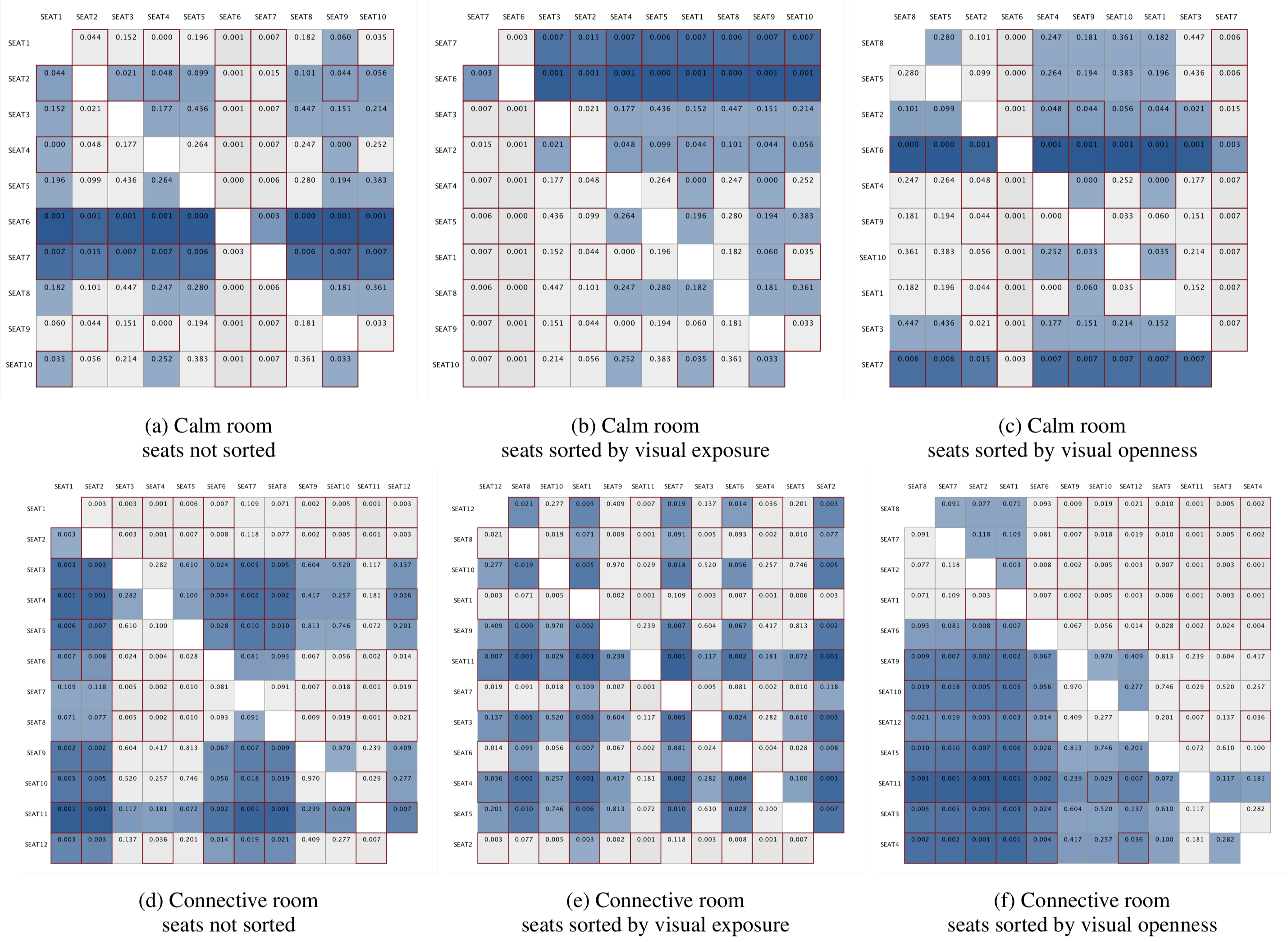


CHI.18
This contribution exemplifies how the use of data science in the study of space perception and its impact on space-use behavior can inform sustainable architecture. We describe our attempt to integrate the methods of user research in an architectural project that was focused on optimization of space usage.In an office building, two large office rooms were refurbished to provide desk-sharing opportunities through hot-desking. We studied the space-use behavior of 33 office workers over eight weeks in those two rooms as well as their occasional presence in ten other areas (cafeteria, atrium, meeting rooms, etc.).
Certain visual attributes of a workspace,
namely “Visual Exposure” and “Visual Openness”, could determine whether or not it was regularly used.
The Hide and Seek of Workspace:
Towards Human-Centric Sustainable Architecture https://doi.org/10.1145/3173574.3173649